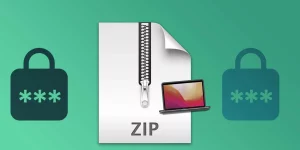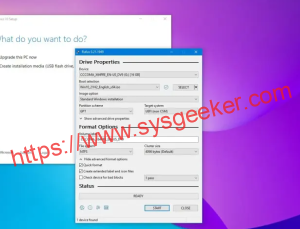Table of Contents
When it comes to managing and transferring music files, iOS devices can be somewhat of a mystery to users. Despite Apple’s many features intended to streamline the process of importing and exporting data, some users report having issues transferring their music from their iPhone to the Mac for various reasons. This could be for backup reasons, downloading purchased music files onto their Mac, or just wanting to free up space on their phone or mobile device. Whatever the reason may be, there are a few ways to transfer music from iPhone to Mac with ease.
Video Tutorial:
What’s Needed
Before you dive into any of the methods mentioned in this blog post, there are a few things you will need. First, make sure that your iPhone and Mac are both connected to the internet. Also ensure that both devices are using the latest software updates. Additionally, you will need a cable to connect your iPhone to the Mac. Lastly, make sure that the music files you want to transfer are downloaded to your iPhone or stored in your iCloud account.
What requires your attention?
Of course, the most important aspect to transferring music is making sure that you have all the necessary files and programs you need downloaded correctly. Another fundamental aspect to consider is ensuring that you have sufficient space on your Mac to accommodate the music files you want to transfer. It is also important to note that not all music files may transfer due to different file formats, so it may be necessary to convert files beforehand.
Method 1: iTunes
The first method is using iTunes, which is Apple’s proprietary software for managing music files. First plug in your iPhone to your Mac using the cable. Then, on your Mac, open iTunes and select your iPhone using the device icon in the top bar. Note that for newer versions of iPhones using iOS 13 or later, you may need to select “Trust” on your iPhone when given the prompt. Once your device pops up on iTunes, click “Music” on the left sidebar of the screen under “Library”, then select the music files you want to transfer to your Mac. From here, simply click on “File” in the top left corner, navigate down to “Export as PDF”, and choose the folder to save the music files at and click “Save”. Your music will then be saved to your Mac.
Pros:
iTunes is a comprehensive software for easily transferring files specifically catered to Apple devices.
Cons:
iTunes can be notoriously difficult to navigate for some users, and sometimes may have compatibility issues with certain file types. Additionally, the process of importing files is slower as it involves managing files through another program.
Method 2: Airdrop
Another way to transfer music is through using Airdrop functionality (if both devices have Apple’s Airdrop feature enabled). Start by making sure Bluetooth and WiFi are turned on for both your iPhone and Mac. Then, navigate to the Control Center on your iPhone and select “Airdrop” and choose “Everyone”. On your Mac, open Finder and click on “Airdrop” in the sidebar. Make sure that your Mac is discoverable on the network, then drag and drop the music files you want to transfer onto the Airdrop icon on the Mac. A prompt will appear for you to accept the files on either device.
Pros:
Airdrop is easy to use and offers seamless transfers once both devices are set up. Additionally, there are no additional programs required for this method.
Cons:
Airdrop has been known to have connection issues and has a file size limit of around 10 GB, which may not accommodate larger music libraries.
Method 3: iCloud Music Library
iCloud Music Library is another option available for transferring files. This is a cloud-based music storage service that enables easy syncing and transferring of music files on Apple devices. First, make sure that both your iPhone and Mac is connected to the internet. On your Mac, navigate to “System Preferences” then click on “Music”. Then select “iCloud Music Library”. On your iPhone, go to “Settings” and tap on your name, then select “iCloud” and then “Music”. Make sure that “iCloud Music Library” is turned on. Then, on your Mac, open the Music app and find the songs you want to transfer. Simply control-click on the song and then download it to your Mac.
Pros:
This method is completely cloud-based so there’s no need to connect your iPhone to your Mac with a cable. It’s a convenient way to access your music library from multiple devices.
Cons:
This method requires a stable internet connection on both devices and may require additional setup steps. Additionally, maintaining files in the cloud can require additional costs depending on your storage needs.
Why Can’t I Move Music from iPhone to Mac?
There are numerous reasons why you may be having trouble transferring your music from your iPhone to your Mac. Some potential reasons may include outdated software, incorrect settings on your device, incompatible file types and so on.
Fixes:
Luckily, there are a few general fixes to a variety of issues that may be preventing the music files you want to transfer:
1. Make sure that both devices are updated to the latest software version.
2. Try restarting both devices and then reconnecting them to each other.
3. Check your iCloud settings on both devices to make sure everything is turned on and properly configured.
4. Check that the music files you want to transfer are compatible files and not DRM-protected.
Implications and Recommendations
It is important to make sure you have all necessary cables and software for your devices and that your devices are up to date before attempting to transfer files. It’s also a good idea to have a backup of your music library stored somewhere else in case you encounter any issues during the transfer process. Additionally, be mindful of the size of the music files you’re transferring and the storage capacity of your devices.
FAQs
Q: Will my files also get deleted from my iPhone after transferring them to my Mac?
A: No, transferring music to your Mac doesn’t delete them from your iPhone. The music files will still be present in your iPhone’s local storage or in the iCloud account.
Q: Can I transfer music files through email?
A: Technically Yes, but it’s not the most practical way of doing it. There are limits to file size that can be sent through email, so music files may not transfer correctly.
Q: Can I use Spotify to transfer music from my iPhone to my Mac?
A: Unfortunately, Spotify only streams audio and doesn’t allow users to save music files as standalone files, making it impossible to transfer files using this platform.
Q: Can I purchase music from the iTunes Store on my Mac?
A: Yes, you can purchase music from the iTunes Store on your Mac, and then later transfer those music files to your iPhone.
Conclusion
Transferring music from your iPhone to your Mac can be done through various methods, including using iTunes, Airdrop, or iCloud Music Library. Each of these methods has its benefits and drawbacks, so it’s important to select the one that works best for you. With the right setup and software, you can easily transfer music files from your iPhone to your Mac in just a few steps.

